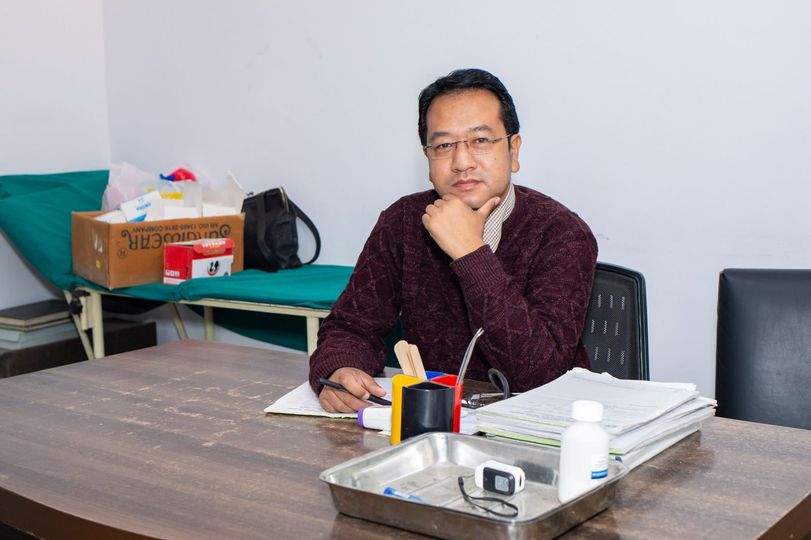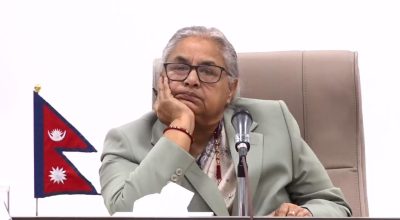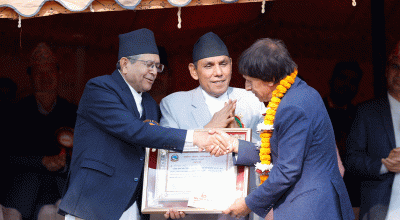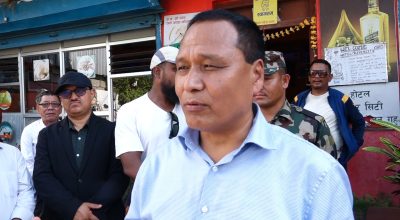
Dr Sher Bahadur Pun
Kathmandu, Oct 15: On my days off, I usually go to the market to buy vegetables. On my way back, I take a public vehicle, particularly a bus. A few days ago, I heard a couple sitting right behind me discussing their symptoms: fever, severe headaches, body aches, and a lack of appetite. One of them suggested that it might be dengue, mentioning they would consult a doctor and get a blood test the next day. Similarly, other morning, I overheard two people outside my window (possibly out for a morning walk) expressing concerns about having dengue due to their fever and body aches. This indicates that dengue is currently spreading in the community.
Dengue is not a communicable disease but the dengue virus is transmitted and spread to humans through the bites of infected female mosquitoes, primarily the Aedes aegypti mosquito. While symptoms of dengue are often discussed, fewer people are aware of the critical symptoms that could indicate severe dengue. Statistics show that many who died from dengue in 2022 were admitted to the hospital already suffering from severe dengue. We must learn from past shortcomings to reduce the mortality rate of dengue in the future. Thus, understanding the early signs of severe dengue is essential.
Most dengue-infected individuals first exhibit a “febrile phase,” characterized by severe headaches, body aches, joint or muscle pain, and a complete lack of appetite. Other symptoms include fever, pain behind the eyes, rashes, and diarrhea. Some may even develop a cough, but it is often unclear whether this is due to dengue or a flu virus. Currently, the flu season is also underway, and COVID-19 infections are still present. The “febrile phase” typically lasts around eight to ten days. After the fever subsides, there is a high probability that severe dengue may develop within 24 to 48 hours.
Early signs of severe dengue
– Persistent vomiting
– Severe abdominal pain
– Bleeding from the nose or gums
– Restlessness or extreme weakness, etc.
These symptoms can manifest while the infected individual is recuperating at home. Therefore, upon noticing these signs, immediate consultation at a health center or hospital is necessary. During examination at the hospital, additional signs can be identified. Tests may reveal an enlarged or swollen liver and the presence or absence of fluid in the chest or abdomen. Blood tests typically show a rapid decrease in platelet count and an increase in hematocrit levels. Individuals infected with dengue often experience weakness. After contracting dengue, the platelet count in the blood begins to drop significantly. In such cases, proper diet and lifestyle alongside medication become crucial.
The dengue outbreak in Kathmandu in 2022 claimed the most lives. This outbreak was often compared to the severe waves of COVID-19. It marked the second-largest outbreak in Kathmandu since 2019, necessitating hospital visits for many. In my view, 2022 can be termed a year of “severe dengue” in Nepal’s history. Elderly individuals and those with chronic illnesses, such as hypertension, diabetes, and respiratory infections, were particularly vulnerable to severe dengue complications. Studies have shown that other infectious diseases seen during the monsoon season exacerbate dengue symptoms.
In Nepal, dengue often coexists with infections like chikungunya virus, scrub typhus, and the flu. Therefore, elderly individuals or those with pre-existing conditions such as hypertension, diabetes, and respiratory problems must not wait for the signs of severe dengue to appear. It is wise to maintain regular communication with a healthcare provider regarding one’s health status. Preventing dengue involves avoiding mosquito bites, as their bites and infections can be highly dangerous.
Before the current Dashain festival, dengue cases were on the rise. Post-Dashain visits to hospitals revealed an increasing number of confirmed dengue patients. This indicates a continuous trend of dozens of dengue virus confirmations daily. Notably, reports suggest that dengue has had a widespread impact not only in Kathmandu but across various regions of the country. The likelihood of this trend stopping soon seems very low.
Interestingly, many dengue-infected individuals are seen continuing their daily routines while displaying symptoms. Many seem to be in a state described as “walking dengue,” which refers to individuals who continue their daily activities while infected with dengue. During festivals, people often overlook their symptoms while socializing and visiting others. Because the common symptoms of dengue closely resemble those of other everyday ailments, individuals may dismiss them and self-medicate. They tend to avoid seeking medical help until their condition worsens.
Most people observe improvements in their health within 8 to 10 days after showing dengue symptoms, but for some, the disease can lead to severe complications. Therefore, it is crucial for those infected to recognize the early signs of severe dengue and seek medical advice immediately. Although challenges remain in stopping the wave of dengue infections, paying attention to the early signs of severe dengue can significantly reduce the mortality rate associated with the disease.
While various media outlets have disseminated information on what dengue is, how it spreads, and its symptoms, future efforts should focus on raising awareness about the early signs of severe dengue. This focus is necessary to considerably decrease the death rate from dengue, marking it as a pressing need and demand of the current time.
(The author is the head of the Clinical Research Unit at the Sukraraj Tropical and Infectious Disease Hospital, Kathmandu.)













